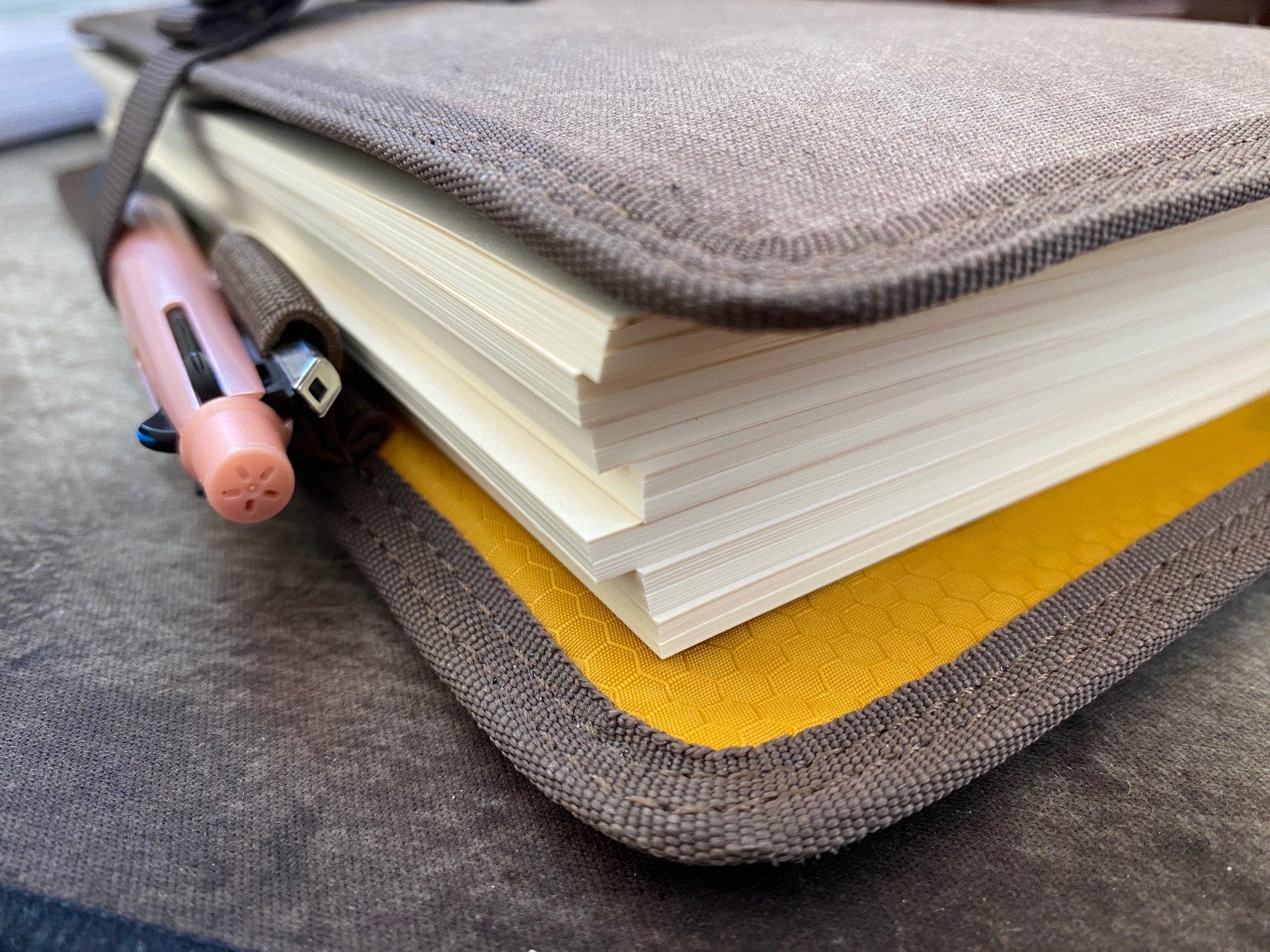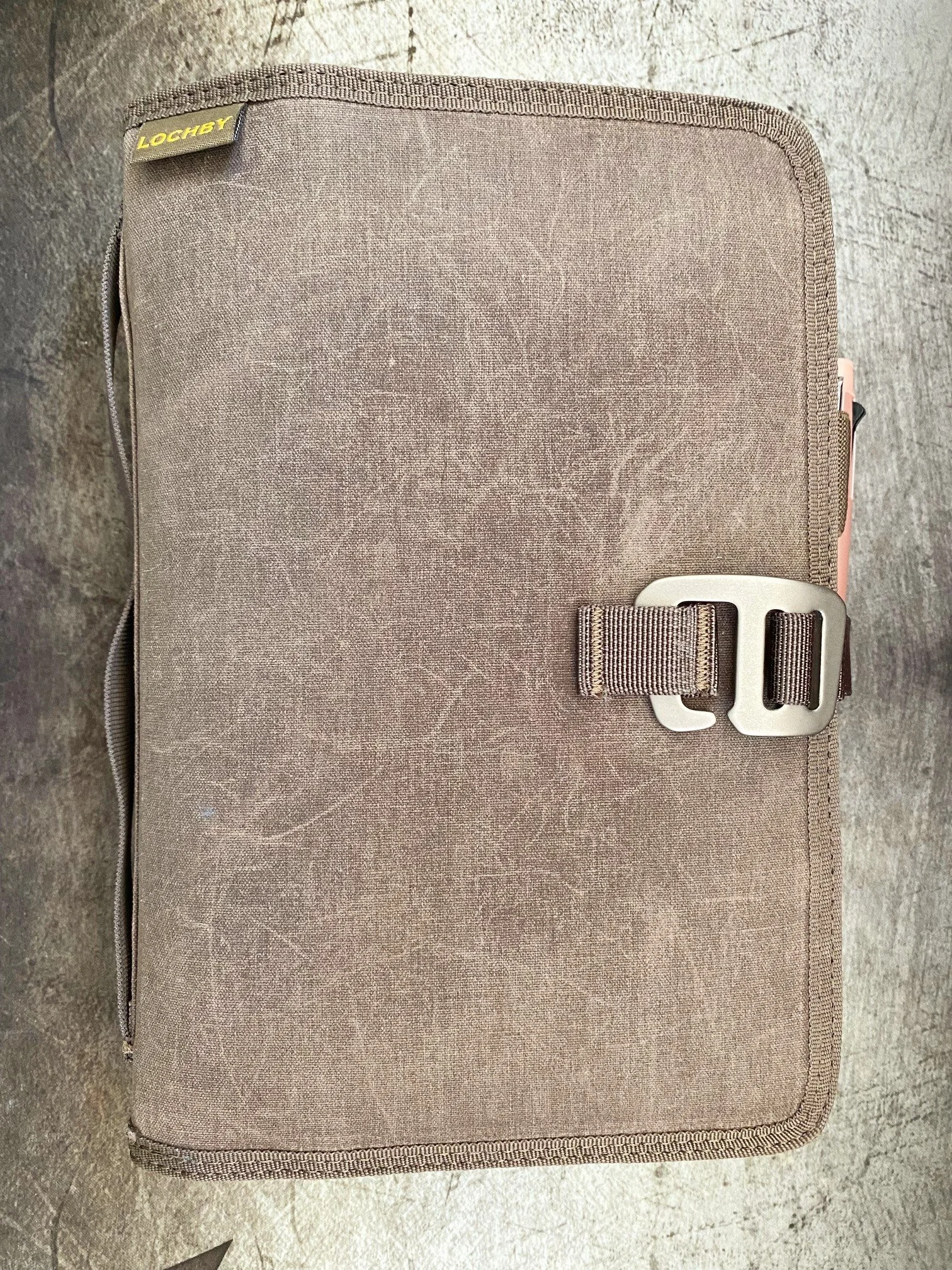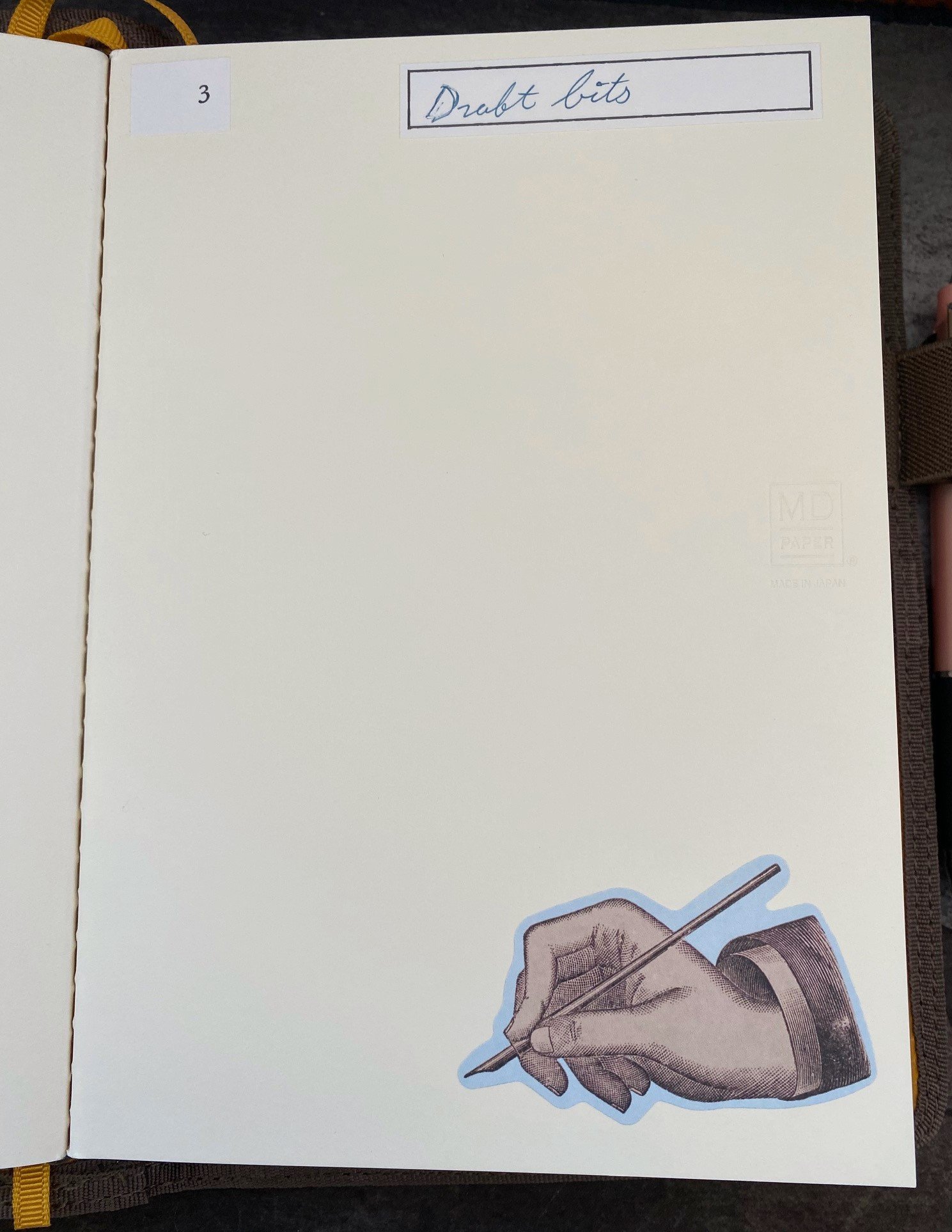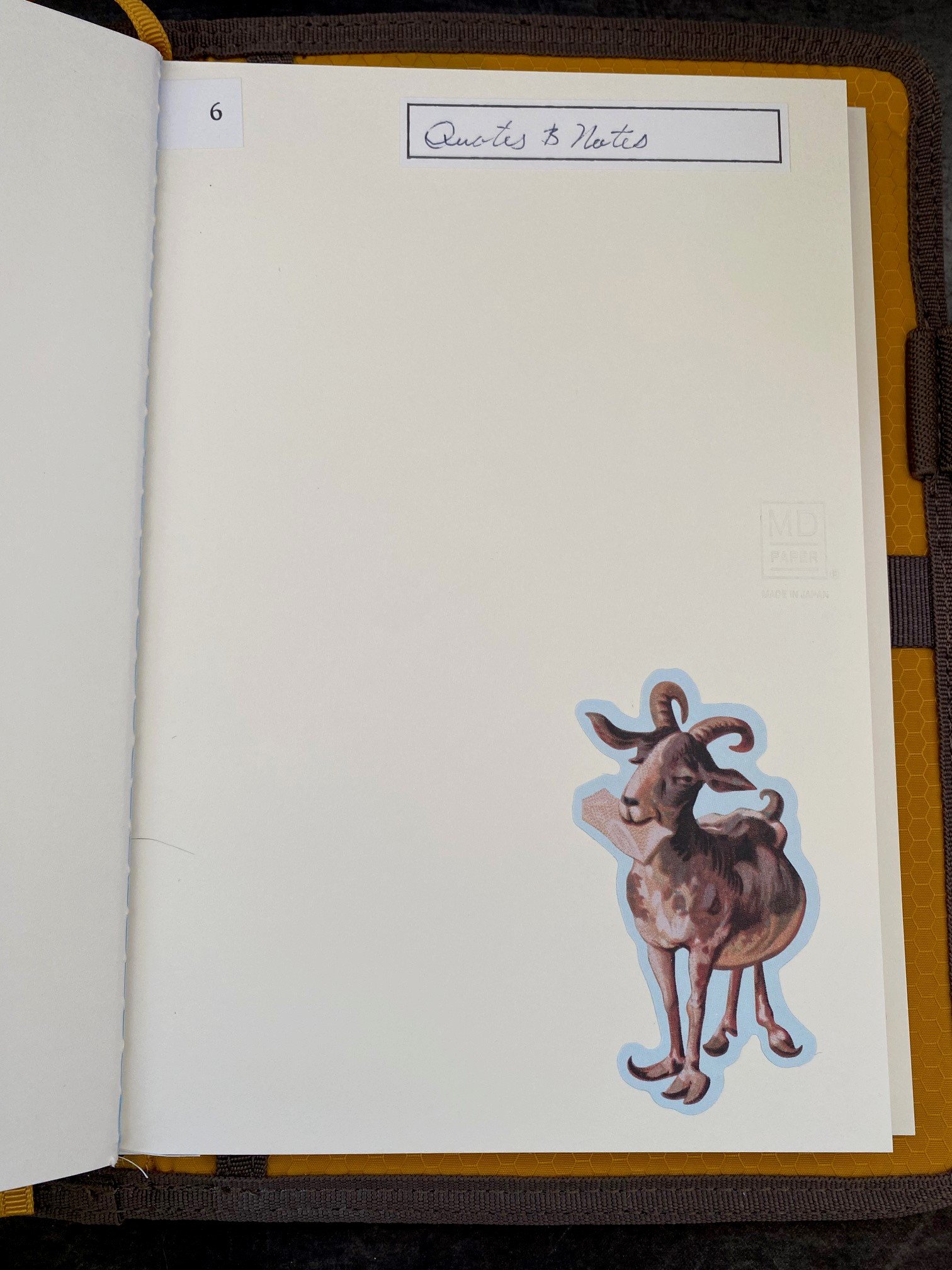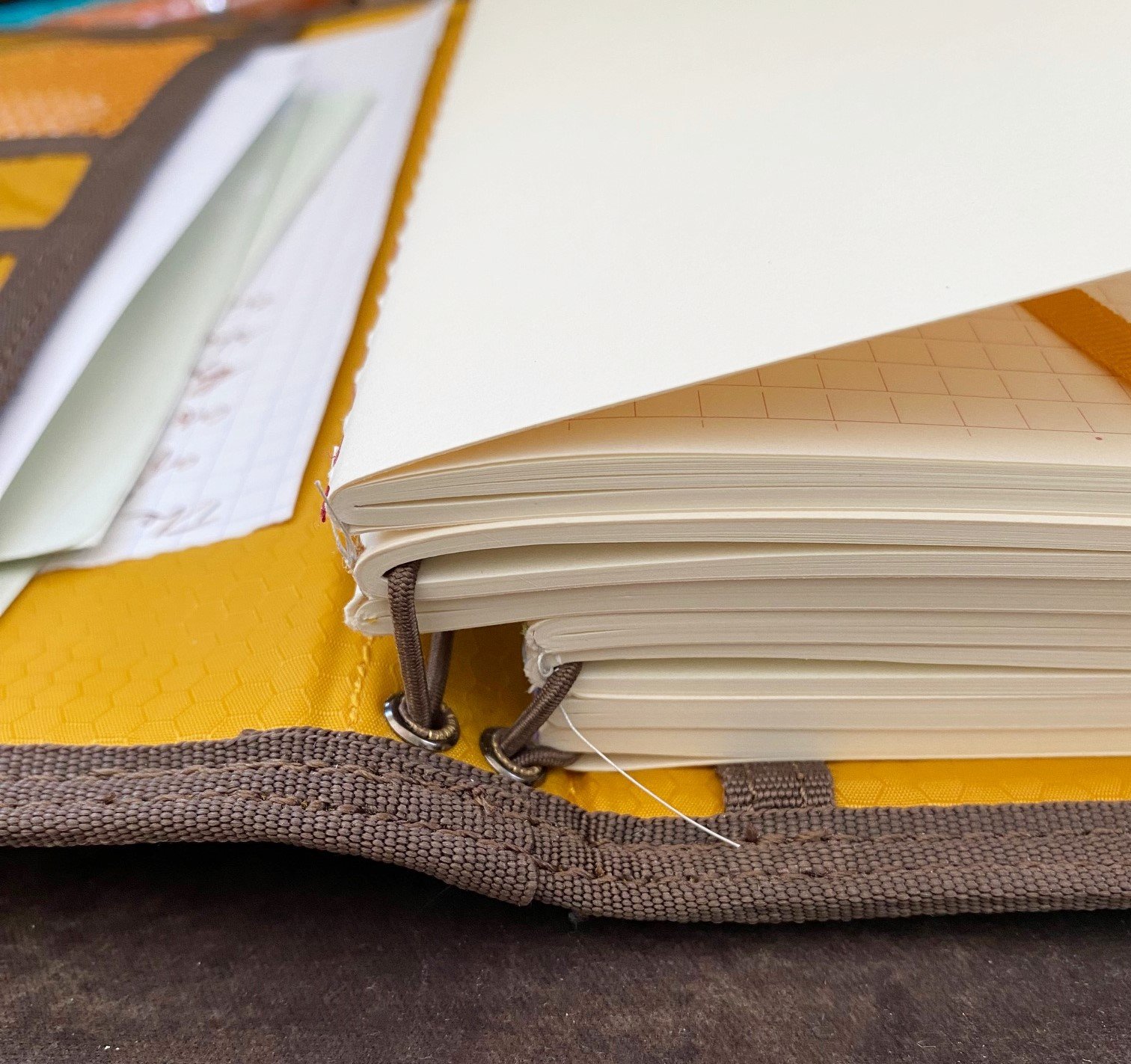(Sarah Read is an author, editor, yarn artist, and pen/paper/ink addict. You can find more about her at her website and on Twitter. And check out her latest book, Out of Water, now available where books are sold!)
Memorial Day weekend is always my busiest writing time. As a horror writer, everything is scheduled to come out around Halloween, which means everything is due by June. Sometimes I spend the weekend hiding at the lake and writing, and sometimes I spend it at a convention in Madison. This year I attended the convention, though I hid and wrote most of the time.
I usually set myself a minimalistic travel goal. But when you're running on four deadlines, maximalism rules. There was no thoughtful process about which pen to bring. Is it inked? Bring it! Oh, you're writing stories in three different notebooks? Bring them all! And you have to type them and turn them in??? Better bring the computer! I usually travel with a backpack only for any amount of time, but this trip took three bags, and it was only three days. Granted, I had to have a ballgown and heels with me, but still. I also adopted a small cactus on the first day of my trip, which added an interesting daily carry challenge that I did not anticipate.
My clothes and toiletries traveled in my Tom Bihn Tri-Star; my computer, tech, and heels were in the Tom Bihn Swift; and my daily carry, including all writing gear, was the Tom Bihn Parental Unit. The Tri-Star is usually all I need, with the addition of a sling to use as a purse. But the Parental Unit is 99.99% the perfect bag for me. If it had an external grab handle, it would be unbeatable. The internal organization makes my heart sing, and it never fails to amaze me how much I can fit into it while not feeling overburdened. It's the most carried bag I own. For daily use, I just don't zip it, and make use of the inexplicably placed interior grab handles. I need it zipped when I travel, though, so it drove me a little nuts on this trip.
For my most-used writing gear, I defaulted to my Hobonichi Cousin. I'm terrible at using the daily pages for daily things, so I use the unused daily pages as rough draft pages. It works out to be the perfect system for me, as I have the monthly and weekly planner pages that I use all the time, and then the rest is essentially a regular notebook, which I always need to have with me anyway. The pen I reached for most was my Hardy Penwrights that I got at the Chicago Pen Show a few weeks ago. Granted, it was so pretty it distracted me and inspired a whole pen glamour-shot photoshoot for later blog use, and it even distracted some nearby writers who have now been penabled. It happens.
I also spent a good amount of time drafting in my Seven Seas Writer, and for that I used my Sailor 4am that I reviewed last week. Most of the rest of my writing was done on the computer. Alas.
To carry my precious pens safely, I used a Rickshaw Bagworks case I got from Carolina Pen Company--their Unicorn Autopsy design. Inside that I have a three-pen Rickshaw sleeve, a two-pen Rickshaw sleeve, and two single-pen Rickshaw sleeves. I'm a fan.
Get to work!!!
Overall, it was a lot to carry, and I didn't use it all, because I didn't hit all my deadlines. I'm still working on it! I hit the road again in a week, for another author conference. I'm going more minimal this time--though I still need the ballgown and heels. And I'm taking a train halfway across the country, so I'm hoping for some chill writing time. I'm bringing two fountain pens (a Schon DSGN pocket pen and a Kaweco Liliput), two non-fountain pens (a Spoke Roady and a Pen Type-B), and two notebooks (my Hobonichi and the Plotter Mini). That doesn't sound too minimal when I list it all out, but who needs clothes when you can pack stationery? I'll just wear the gown every day.
Enjoy reading The Pen Addict? Then consider becoming a member to receive additional weekly content, giveaways, and discounts in The Pen Addict shop. Plus, you support me and the site directly, for which I am very grateful.
Membership starts at just $5/month, with a discounted annual option available. To find out more about membership click here and join us!



















